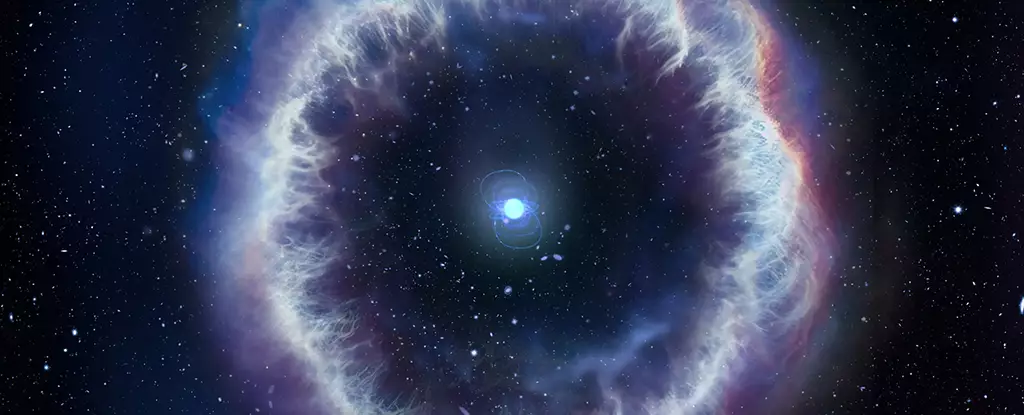The realm of astrophysics is filled with enigmatic phenomena, and one of the most captivating mysteries that continues to baffle scientists is the occurrence of Fast Radio Bursts (FRBs). These sudden and intense blasts of radio wave energy from deep space have puzzled researchers for years, prompting numerous studies and investigations to unravel their origins and underlying mechanisms. A recent study conducted by a team from the Italian National Institute for Astrophysics (INAF) sheds new light on the intriguing nature of FRBs, particularly focusing on FRB 20201124A discovered in 2020.
The researchers delved into the intricate details of FRB 20201124A, specifically examining a persistent radio source (PRS) located near the FRB. These PRS signals, detected in proximity to a few FRBs, pose a significant connection to the origin of these mysterious bursts. The study highlighted that the PRS signals emanated from a plasma bubble encompassing the enigmatic source of the FRB, indicating the presence of an ionized nebula – a cloud of electrically charged gas and dust. According to astrophysicist Gabriele Bruni, the radio observations unveiled a weak persistent emission originating from the same vicinity as the FRB, expanding the range of explored radio flux for such objects substantially.
The data collected, incorporating observations from the Very Large Array (VLA) Radio Telescope in New Mexico, inferred that the nebula surrounding the FRB source could potentially stem from a young magnetar or a binary system containing a neutron star or a black hole. These celestial entities have the capability to generate energy in substantial quantities, thereby triggering the FRB signals observed by the researchers. The presence of a plasma bubble, predicted to be responsible for the background radiation of the PRS, may also be attributed to the formation of such energetic phenomena.
While numerous questions remain unanswered regarding FRB 20201124A, the recent research provides valuable insights into certain aspects of the puzzle surrounding these enigmatic bursts. Although it is recognized that other FRBs may originate through different mechanisms, the study signifies a significant step towards elucidating the origins of at least one FRB. Astrophysicist Brendan O’Connor from Carnegie Mellon University emphasized the importance of high-resolution data in narrowing down the potential sources of FRBs, such as ruling out scenarios like star formation based on the distribution within the host galaxy.
Further data obtained from the Northern Extended Millimeter Array (NOEMA) and Gran Telescopio Canarias telescopes enabled the researchers to delineate the energy release from the system across various wavelengths of light. This detailed analysis is crucial in deciphering the signals received from distances exceeding over a billion light years. O’Connor highlighted the significance of enhanced angular resolution in radio wavelength data, drawing an analogy to viewing something in high-definition (HD) compared to standard resolution.
The recent study on FRB 20201124A provides a glimpse into the complex and fascinating world of Fast Radio Bursts. By unraveling the mysteries surrounding the origins of these intense radio signals, researchers are edging closer to understanding the cosmic phenomena that continue to captivate the scientific community. While there is still much to explore and uncover, the insights gained from this research pave the way for further investigations and advancements in the field of astrophysics.



Leave a Reply